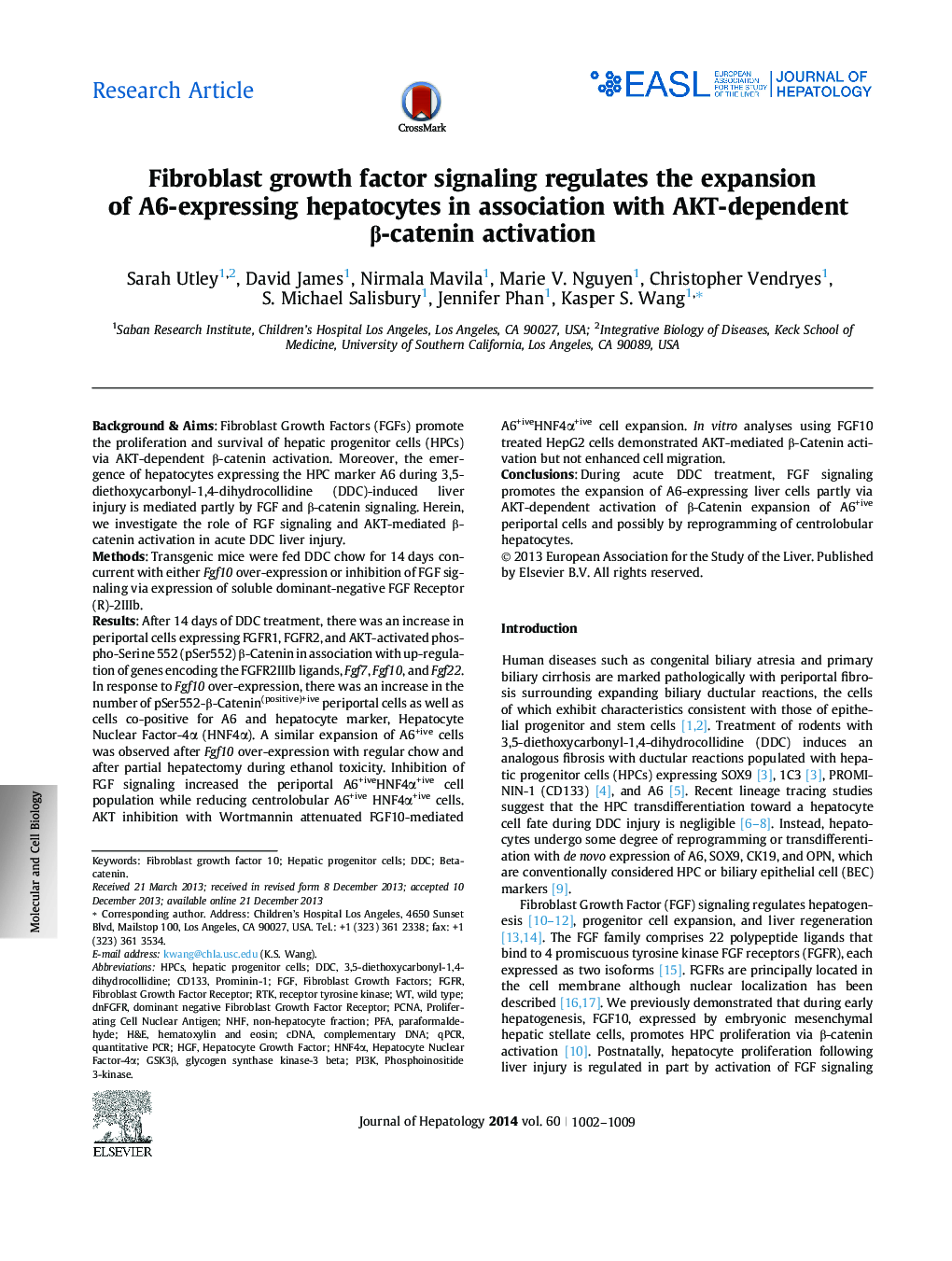| کد مقاله | کد نشریه | سال انتشار | مقاله انگلیسی | نسخه تمام متن |
|---|---|---|---|---|
| 6103590 | 1211130 | 2014 | 8 صفحه PDF | دانلود رایگان |

Background & AimsFibroblast Growth Factors (FGFs) promote the proliferation and survival of hepatic progenitor cells (HPCs) via AKT-dependent β-catenin activation. Moreover, the emergence of hepatocytes expressing the HPC marker A6 during 3,5-diethoxycarbonyl-1,4-dihydrocollidine (DDC)-induced liver injury is mediated partly by FGF and β-catenin signaling. Herein, we investigate the role of FGF signaling and AKT-mediated β-catenin activation in acute DDC liver injury.MethodsTransgenic mice were fed DDC chow for 14 days concurrent with either Fgf10 over-expression or inhibition of FGF signaling via expression of soluble dominant-negative FGF Receptor (R)-2IIIb.ResultsAfter 14 days of DDC treatment, there was an increase in periportal cells expressing FGFR1, FGFR2, and AKT-activated phospho-Serine 552 (pSer552) β-Catenin in association with up-regulation of genes encoding the FGFR2IIIb ligands, Fgf7, Fgf10, and Fgf22. In response to Fgf10 over-expression, there was an increase in the number of pSer552-β-Catenin(positive)+ive periportal cells as well as cells co-positive for A6 and hepatocyte marker, Hepatocyte Nuclear Factor-4α (HNF4α). A similar expansion of A6+ive cells was observed after Fgf10 over-expression with regular chow and after partial hepatectomy during ethanol toxicity. Inhibition of FGF signaling increased the periportal A6+iveHNF4α+ive cell population while reducing centrolobular A6+ive HNF4α+ive cells. AKT inhibition with Wortmannin attenuated FGF10-mediated A6+iveHNF4α+ive cell expansion. In vitro analyses using FGF10 treated HepG2 cells demonstrated AKT-mediated β-Catenin activation but not enhanced cell migration.ConclusionsDuring acute DDC treatment, FGF signaling promotes the expansion of A6-expressing liver cells partly via AKT-dependent activation of β-Catenin expansion of A6+ive periportal cells and possibly by reprogramming of centrolobular hepatocytes.
Journal: Journal of Hepatology - Volume 60, Issue 5, May 2014, Pages 1002-1009